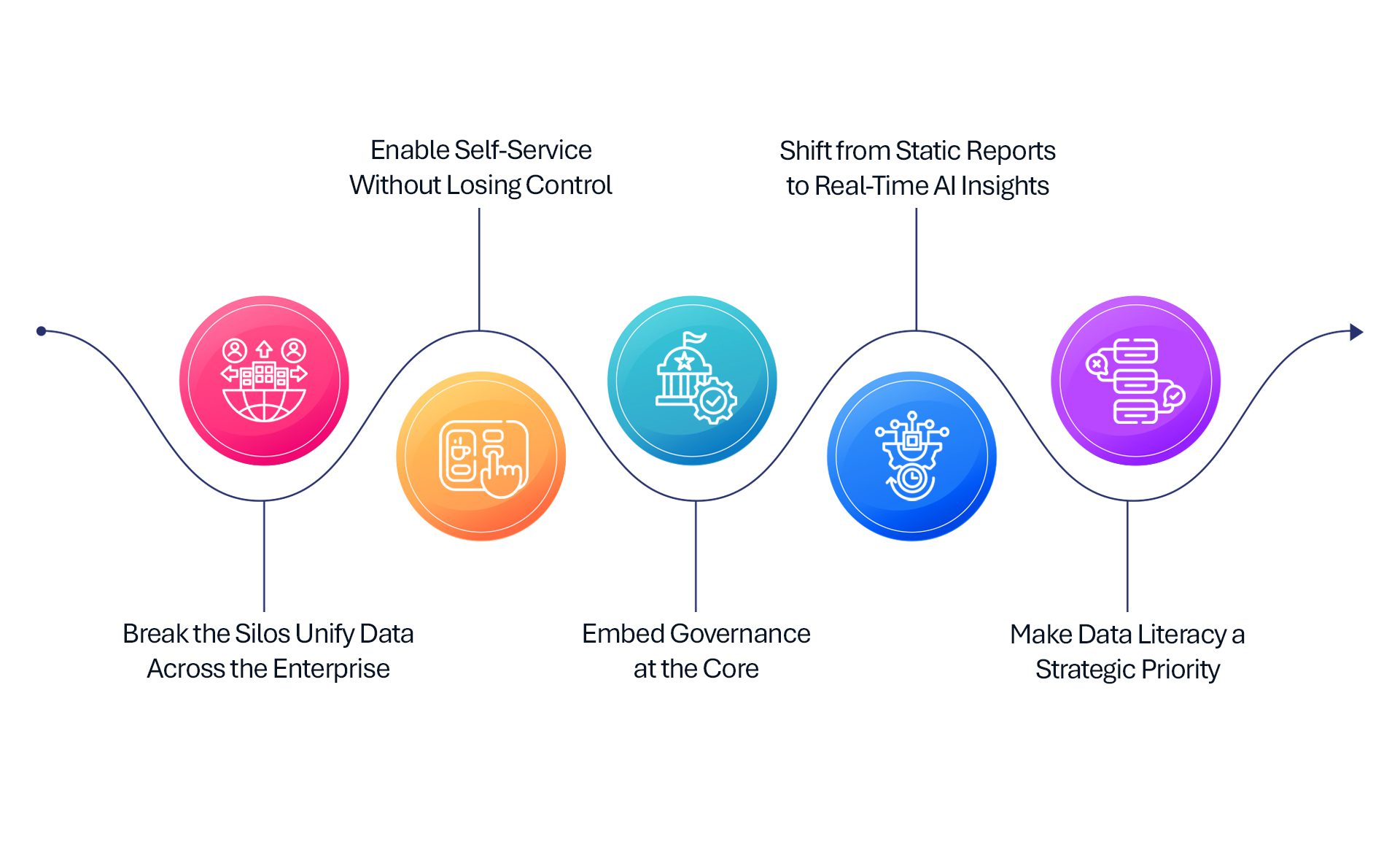At a time when data is the currency, an enterprise is paradoxically data-rich and insight-poor. Massive investments in AI applications, data governance, and data security are no guarantee to address the biggest bottleneck to innovation-availability of data.
Why? Because most organizations are still operating in a data oligarchy, where a few control access and the rest wait for approvals, workarounds, or, worse, make decisions with incomplete information.
Data democratization by design will be the new frontier in enterprise data agility in 2025. Only organizations that fully integrate data access, governance, and AI-driven automation into their data platforms can deny competitors this kind of obvious advantage. For everyone else? Bureaucracy, inefficiency, and regulatory risks will drown them.
What is Data Democratization by Design?
Data democratization is actually the process of removing bottlenecks while still ensuring data safety and compliance. It ensures real-time data availability to everyone involved in the business, operations, or engineering, without requiring anybody to navigate layers of gatekeeping.
But here’s the catch: data democratization cannot be an afterthought. Enterprises have to design for it from the ground up, ensuring that data quality, governance, and security bake into the system, not bolted on later.
What Does It Look Like in Practice?
- AI-powered data fabric – Unifying structured and unstructured data across hybrid and multi-cloud environments for seamless data integration.
- Self-service data management – Allowing teams to query, analyze, and process data without IT bottlenecks.
- Embedded governance – Automating data security posture management (DSPM), access control, and compliance to prevent data contamination and privacy breaches.
- Real-time intelligence – Empowering decision-makers with AI-driven analytics, real-time data, and predictive insights instead of stale, batch-processed reports.
This shift from gatekeeping to enablement is what defines Data Democratization by Design.
Why Now?
If data democratization is so powerful, why haven’t enterprises embraced it sooner? The answer lies in legacy thinking and outdated infrastructures.
For decades, organizations have been obsessed with data protection over data usability. While data security is non-negotiable, the pendulum has swung too far, creating environments where:
- 68% of enterprise data goes unused because it’s trapped in silos.
- 72% of executives said that the sheer volume of data and a lack of confidence over data accuracy are preventing them from making the right decisions.
- Top data governance issues that confront leaders include compliance audits at 52%, regulatory warnings for non-compliance at 40%, and data breaches.
Now, a perfect storm is forcing a rethink:
1️. AI is Hungry for Data – Generative AI and machine learning models thrive on high-quality, contextualized, and accessible data. If enterprises can’t mobilize historical data and real-time analytics fast enough, AI projects will fail before they begin.
2️. Regulatory Pressure is on the Rise – The DPDP Act, EU AI Act, and SEC cybersecurity mandates are putting data governance, sovereignty, and security on the boardroom agenda. Organizations have to prove who accessed what data, when, and why—or face regulatory fines.
3️. Real-time Business Demands – From hyper-personalized AI solutions to predictive risk modelling, businesses need seamless data workflows that fuel AI predictions for the future. The old model of “submit a data request and wait” is no longer viable.
The message is clear: companies that fail to democratize data will lose agility, stifle innovation, and fall behind in AI adoption.
How Can Enterprises Implement Data Democratization by Design?

1️. Break the Silos—Unify Data Across the Enterprise
- Use a data fabric or data science-driven architecture to integrate structured and unstructured data.
- Use AI-driven data discovery and metadata ecosystems to classify, contextualize, and catalog data assets.
2️. Enable Self-Service Without Losing Control
- Implement role-based access control (RBAC) so that teams only get the data they need—and no more, no less.
- Apply zero-trust security models to enforce real-time data access policies dynamically.
3️. Embed Governance at the Core
- Automate compliance tracking, data lineage and risk mitigation with AI-powered data security posture management (DSPM).
- Maintain sovereignty of data through geofencing of data flows and adherence to the regional data protection laws.
4️. Shift from Static Reports to Real-Time AI Insights
- From static BI dashboards to real-time analytics for making decisions faster.
- Integrate natural language queries and generative AI so that users without technical backgrounds can look at the data to explore it without SQL queries.
5️. Make Data Literacy a Strategic Priority
- Train employees on data governance, AI-driven decision-making, and data science fundamentals at all levels.
- Promote a culture of “data as a product”, where teams own and optimize their datasets, ensuring robust data management.
Industry Trends: The Data Revolution Has Already Begun
- By the end of 2025, 70% of organizations will be driven to pivot from big data to small and wide data strategies, optimizing data utilization by either minimizing volume requirements or maximizing insights from diverse, unstructured data sources.
- 62% of organizations are ready to audit their existing Data Governance programs and adopt a hybrid approach, integrating corporate policies with executive-driven oversight while enabling business units to maintain autonomy through federated structures for greater agility and compliance.
- 74% of organizations report faster decision-making processes after implementing SSDM (Self-service Data Management) solutions.
Getting Started with Data Dynamics:
- Learn about Unstructured Data Management
- Schedule a demo with our team
- Read the latest blog: Data Democratization: Revolutionizing Access or Opening Pandora’s Box?






